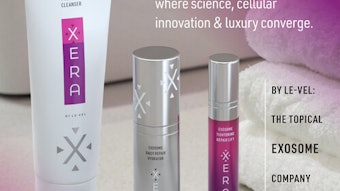- It is important to dissociate claims regarding the naturalness of ingredients from the perception of safety.
- An ingredient’s renewability should be incorporated into the product development process, to result in the smallest possible negative footprint on the environment.
- There is a definite push toward eliminating classical, “chemical-sounding” ingredients, even if they are proven safe and have little or no impact on the planet.
It appears that consumer interest in natural and organic products continues to grow. The question is: What does this mean? Are consumers actually interested in products that contain natural materials, or are they really interested in products that are safer and whose production or use have a minimal impact on the planet (i.e., they are renewable)? The key to meeting consumer demand is to understand what natural means in order to formulate and market products that meet expectations.
Since the beauty industry is not regulated, various organizations have offered conflicting positions on standardized guidelines for natural and organic claims. To improve communication on this topic, it will therefore become important to dissociate claims regarding the naturalness of ingredients from the perception of safety.
Safety is inherent in the raw materials used for formulating, regardless of their origin and in the synergies among ingredients—for more than 50 years, the industry has worked hard to monitor the safety of products on the market, supported by the U.S. Food and Drug Administration (FDA). And recently, additional governmental agencies—such the U.S. Department of Agriculture (USDA) and the Council of Europe’s Committee of Experts on Cosmetic Products—have taken a proactive role in sorting out the meanings of natural and organic for the beauty industry. Such organizations act as a clearer scientific focal point in deciding what ingredients are safe for use in cosmetic products. In addition, several organizations currently are monitoring the safety of cosmetics and personal care ingredients, such as the Cosmetic Ingredient Review (CIR) panel.
General Formula Standards
There is an ever-growing list of organizations with standardized guidelines that measure the naturalness of a product formula. The definition for natural in chemicals legislation was introduced in 1981, and in 2000, the Council of Europe’s Committee of Experts on Cosmetic Products issued guidelines for natural cosmetic products. Only as recently as 2008, however, did the USDA and the European Cosmetic Standards Working Group (COSMOS)1 provide additional guidance for formulating to meet natural claims. There are a number of non-governmental, for-profit organizations offering organic and/or natural certification for cosmetic products (see “Eco-labels: Environmental Marketing in the Beauty Industry” from the August 2009 issue of GCI magazine), however, organic and natural certifications for cosmetics are not backed by specific legislation, as with food.
Of natural products on the market examined for this article, most consist of at least 90% naturally derived materials and they omit certain ingredients construed as being unsafe, such as parabens. Cosmetic products meeting organic standards tend to follow USDA food standards, where no chemical fertilizers, herbicides, pesticides or other toxins were used to grow the non-hybridized plant sources from which the raw materials are derived. The most common denominators among formulas that meet claims for natural standards include:
- based on environmentally conscious and ecologically sound practices that are socially responsible with regard to the use of resources, and that impart minimum human impact on the environment;
- at least 90% of the formula composition, sans water, is based on renewable feedstock and ingredients with neutral carbon footprints;
- incidental ingredients such as preservatives, chelating agents and antioxidants do not have to be included in the calculation—so long as they represent less than 1% of the non-water portion of the composition, and there are no renewable resource alternatives; and
- all raw materials used should represent the best approach to safe exposure to humans; safety measurements are based on scientific studies demonstrating their long-term safety to humans.
In general, the key to formulating natural products is to choose safe and effective raw materials of as natural an origin as possible. Their renewability also should be incorporated into the product development process, to result in the smallest possible negative footprint on the environment. However, for product developers to meet the specific requirements of a given standard, it is important to fully understand the requirements since they can vary as to how the percentage of natural ingredients is calculated, or the degree of modification allowed to a natural source material. This is important because some natural ingredients are either not functionally suitable to create good aesthetics, are not stable, or are not sufficiently pure—odorless and colorless.
Conclusions
The continued market demand for natural products is growing, and while the definition of natural remains an ongoing discussion, there is a definite push toward eliminating classical, “chemical-sounding” ingredients, even if they are proven safe and have little or no impact on the planet. Since the concept of natural and how it is positioned in the marketplace is still a moving target with minimal legal standardization, it will take some time to provide formulators with a clear idea of how to find and utilize the right materials that support this market claim.
Current standards are dependent upon the marketing divisions within individual companies and their legal departments, but the beauty industry, as a whole, must take a leadership role, as it has for the past 50 years with other issues, to control the misleading association of terms such as natural and organic with consumers’ expectation of implied safety. The industry must also continue in its defense of ingredients with established safety.
This abridged feature was reprinted courtesy of Cosmetics & Toiletries magazine (C&T). The full technical article is available in C&T’s October 2009 issue.
Reference
Eric Abrutyn is an active member of the Society of Cosmetic Chemists, an advisory board member for C&T magazine, and chairman of the Personal Care Products Council’s International Nomenclature (INCI) Committee. Recently retired from Kao Brands, Abrutyn founded TPC2 Advisors Ltd., Inc., a personal care consulting business. Abrutyn has more than 35 years of experience in the raw material supplier and skin and hair care manufacturer aspects of personal care.










